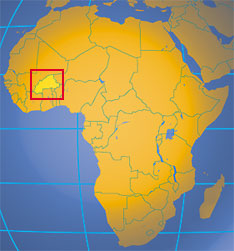Once when I was about 8 years old I decided with a friend that we were going to make peanut butter. Armed with a bag of peanuts still in their shells, a potato masher and very little knowledge of the process of making peanut butter, we started on multiple hours of mess creation with a disastrous end product of inedible peanut mush that had little resemblance to peanut butter.
Now after 6months in Burkina, a few years of culinary experience, I am finally well equipped and knowledgeable about the processes to create peanut butter and the different uses for it. Peanuts are a main staple to Burkinabé diets, eaten raw or roasted, made into sauce for rice or fonio, peanut oil for cooking and used to make snacks of coulees (fried dough with peanut residue) and peanut corn balls. There are probably many other uses that I have yet to discover.
Making peanut paste “butter”
Traditionally and still this way in many villages, peanuts are husked by hand by squeezing the tip of the peanut. This is a long and finger grueling step. Shells and nuts are dropped into a basket. Later the peanuts are separated from their opened shells by shaking the basket. The movement of the basket moves the heavier part (peanuts) to the bottom and the lighter part (the shells) to the top. By tossing the basket contents up the breeze helps blow the light shells off leaving just the nuts. The nuts are then soaked in water to loosen their skins and dried in the sun. Back in a basket and repeating the process of squeezing the sides and tossing the contents up and down the skins fall off the nuts and blow away in the breeze. With just the naked nut remaining the roasting process starts. Using sand to help retain heat and limit the chance of burning you turn the nuts and sand over the fire until the nuts become golden. Using a sieve the nuts are then separated from the sand. Now depending on whether there is access to a grinding mill or not will depend how much time it takes to take the nuts from their present state and to make them into paste. If there is a grinding mill then the process is simple and done by the mill itself, roasted peanuts in one end and peanut paste out the other. If there is no mill then the process is much more time consuming. First the peanuts are crushed using a pestle and mortar until they are broken into little pieces. The pieces are then ground finer by hand using a rock slab and rounded rock. The crushed peanuts are then placed back into the pestle and mortar and pounded until it becomes a peanut paste.
Here are two recipes for those who are experimental and want to try peanut butter in a different form than just on your toast. Both recipes are for natural peanut butter that contains nothing but the peanuts themselves.
2 cups fine unsweetened peanut paste “butter”
2 cups fine corn flour or millet flour
1 cup sugar
Salt to taste
Optional:
Chili powder to taste (to give it a little kick)
Roast corn flour until golden. Mix peanut butter, corn/millet flour, sugar and salt (chili powder) using a pestle and mortar till well combined and smooth, but not too dry or too sticky. Roll the mixture into little balls; nothing should be left on your hands. Eat and enjoy! (Warning: they are tasty but a little dry)
Tieguè diguè nan “Peanut sauce”
4 cups water
2-3 cups peanut paste “butter” (unsweetened)
2-4 onions, chopped
4-6 cloves of garlic, crushed
4-6 bay leaves
2 bunches onion leaves or green onions, chopped
1-2 chili peppers
6-10 tomatoes, cubed
1 cabbage, cut into quarters
2 cubes of chicken stock
1-2 small cans of tomato paste
Salt and pepper to taste
Optional:
~500g of chicken, lamb or beef cubed and fried
1-2 green peppers, chopped
2-4 carrots, chopped
Boil water then add peanut paste stirring occasionally. Cook till slightly frothy and paler in colour, basically till the water and peanut paste are well combined and a unified sauce. Add tomato paste and mix into sauce. Add onions, garlic, bay leaves, onion leaves (green onions), chicken stock, tomatoes, salt and pepper. Mix well. When it starts to combine add cabbage and chili peppers (carrots, green peppers). Simmer on medium till well combined and everything is soft. Add fried meat and cook till tender and sauce has penetrated the meat.
Serve with rice, fonio or couscous.


No comments:
Post a Comment